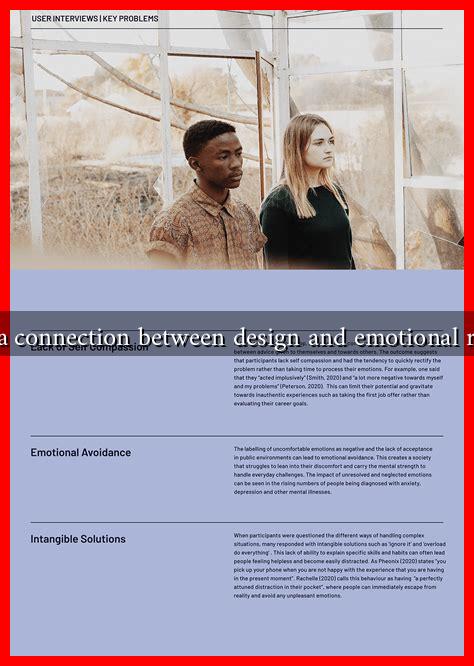-
Table of Contents
Is There a Connection Between Design and Emotional Resilience?
In an increasingly complex world, emotional resilience—the ability to adapt to stress and adversity—has become a crucial skill for individuals and organizations alike. While many factors contribute to emotional resilience, the role of design—whether in physical spaces, products, or digital interfaces—has garnered attention in recent years. This article explores the connection between design and emotional resilience, examining how thoughtful design can foster well-being and enhance our capacity to cope with challenges.
The Psychology of Design
Design is not merely about aesthetics; it profoundly influences human behavior and emotions. The field of environmental psychology studies how our surroundings affect our mental state. Key principles include:
- Color Psychology: Colors can evoke specific emotions. For instance, blue is often associated with calmness, while red can stimulate excitement or anxiety.
- Spatial Design: Open spaces can promote collaboration and creativity, while cluttered environments may lead to stress and distraction.
- Biophilic Design: Incorporating natural elements into design—like plants and natural light—has been shown to reduce stress and improve mood.
These principles highlight how design can create environments that either support or hinder emotional resilience. For example, a study published in the journal *Environment and Behavior* found that individuals working in spaces with natural light reported higher levels of well-being and productivity compared to those in artificially lit environments.
Case Studies: Design in Action
Several organizations have successfully integrated design principles to enhance emotional resilience among their employees and clients. Here are a few notable examples:
- Google: The tech giant is renowned for its innovative office designs that prioritize employee well-being. Features like open spaces, relaxation areas, and access to nature contribute to a positive work environment, fostering resilience among employees.
- Airbnb: The company’s design philosophy emphasizes community and belonging. Their user interface is designed to evoke feelings of trust and comfort, which can help users feel more resilient when navigating travel uncertainties.
- Healthcare Facilities: Hospitals that incorporate healing gardens and patient-centered design have shown improved patient outcomes. A study in *Health Environments Research & Design* found that patients in well-designed environments experienced less anxiety and faster recovery times.
The Digital Dimension: UX Design and Emotional Resilience
In the digital realm, user experience (UX) design plays a pivotal role in shaping emotional responses. A well-designed interface can reduce frustration and enhance user satisfaction, contributing to emotional resilience. Key elements include:
- Intuitive Navigation: Clear and straightforward navigation reduces cognitive load, allowing users to feel more in control.
- Feedback Mechanisms: Providing users with immediate feedback can help them feel more engaged and less anxious about their interactions.
- Personalization: Tailoring experiences to individual preferences can foster a sense of belonging and connection, which is vital for emotional resilience.
For instance, platforms like Headspace and Calm utilize soothing designs and user-friendly interfaces to promote mental well-being, making it easier for users to engage in mindfulness practices that enhance resilience.
Statistics Supporting the Connection
Research supports the idea that design impacts emotional resilience. According to a survey by the American Psychological Association, 61% of respondents reported that their work environment significantly affects their mental health. Furthermore, a study by the World Health Organization found that well-designed environments can reduce stress levels by up to 30%.
Conclusion: Designing for Resilience
The connection between design and emotional resilience is evident across various domains, from workplace environments to digital interfaces. Thoughtful design can create spaces and experiences that foster well-being, reduce stress, and enhance our ability to cope with challenges. As we continue to navigate an increasingly complex world, prioritizing design that supports emotional resilience will be essential for individuals and organizations alike.
In summary, by understanding the psychological impact of design and implementing principles that promote well-being, we can cultivate environments that not only enhance productivity but also empower individuals to thrive in the face of adversity. For further reading on the impact of design on mental health, consider exploring resources from the American Psychological Association.

